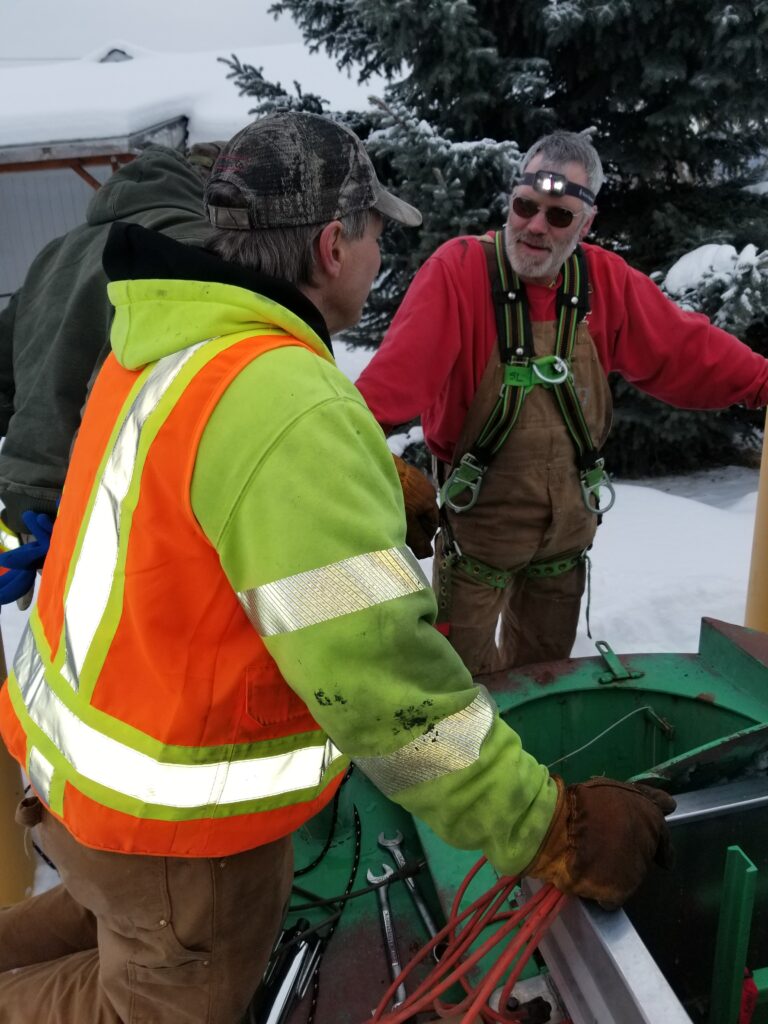The wastewater process consists of the wastewater treatment plant, lift stations and gravity collection system. The existing plant was completed in 1986 at a cost of $2,190,396. The treatment uses a 6-stage aerobic process and general consists of an influent pump station, headworks, oxidation ditch, two secondary clarifiers, UV disinfectant basin and aerobic digesters with sludge drying beds and screw press. Upgrades to the influent pump station and controls were completed during recent wastewater system improvement projects. Maximum capacity of the plant is 500,000 gallons per day; the average is 260,000 daily.
Until the UV upgrade in 2011costing $500,000, the treatment used chlorine to ensure safe discharge into the Kootenai River by achieving outstanding removal of solids, nutrients and E. coli without the use of chemicals.
Also, in 2011 a new sludge press was installed allowing the city to avoid the use of outside drying beds and the frequent odor accompanying the process. The cost of the press and building to house it was $700,000.
Recent upgrades in 2023-2024 included the installation of an auxiliary bar screen located in the influent pump station, new plant controllers, and five blocks of sewer main replacements.
The plant is operated by a Lead Operator and 2-3 assistants. The plant controller alarm system allows the plant to be maintained 24 hours a day by on-call operators.
Several factors which affect the cost of operating and maintaining the waste treatment plant are rising costs of chemicals, testing requirements, permit costs, utility costs, and expensive upgrades to the existing system.
There is a $100 fee for a street opening permit that must be purchased at City Hall when maintenance is required on the service line. It is the properties owners responsibility for the sewer line from the city main in the street to the point of usage.

Jeff Best and Wade Kvapil making repairs on the lift station.